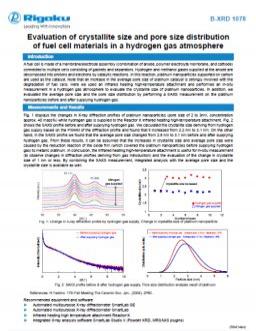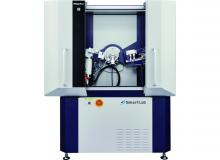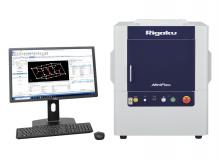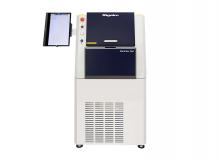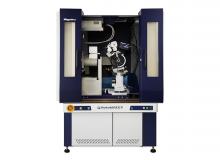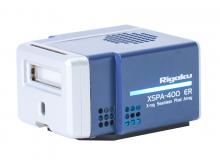A fuel cell is made of a membrane/electrode assembly (combination of anode, polymer electrolyte membrane, and cathode) connected to multiple cells consisting of gaskets and separators. Hydrogen and methanol gases supplied at the anode are decomposed into protons and electrons by catalytic reactions. In this reaction, platinum nanoparticles supported on carbon are used as the catalyst. Note that an increase in the average pore size of platinum catalyst is strongly involved with the degradation of fuel cells. Here we used an infrared heating high-temperature attachment and performed an in-situ measurement in a hydrogen gas atmosphere to evaluate the crystallite size of platinum nanoparticles. In addition, we evaluated the average pore size and the pore size distribution by performing a SAXS measurement on the platinum nanoparticles before and after supplying hydrogen gas.
XRD products from Rigaku
Advanced state-of-the-art high-resolution XRD system powered by Guidance expert system software
New 6th-generation general purpose benchtop XRD system for phase i.d and phase quantification
Compact X-ray diffractometer for quality control of materials that is easy to use and is ideal for routine work
Laboratory micro-spot XRD residual stress analysis with both iso- and side-inclination methods
2D X-ray detector with latest semiconductor technology designed for home lab diffractometers

